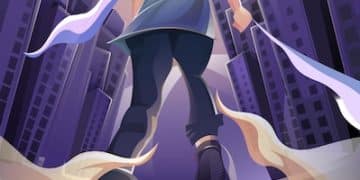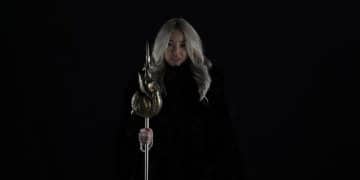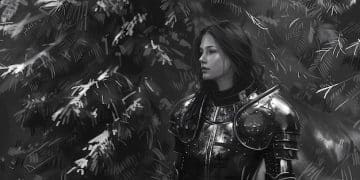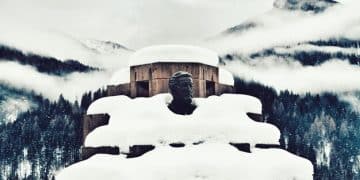The Witcher Art Book: A Behind-the-Scenes Journey into Game Development
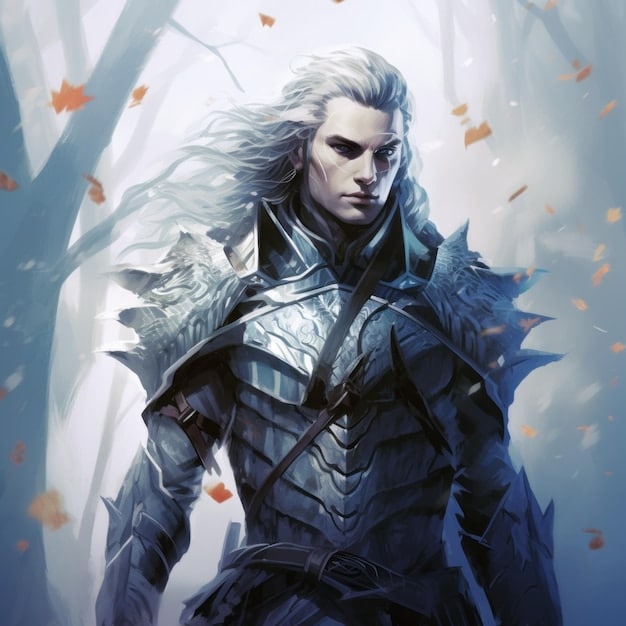
The Witcher Art Book: A Behind-the-Scenes Look at Game Development offers an in-depth exploration of the artistic process behind the acclaimed video game series, featuring concept art, sketches, and insights from the creators that brought the world of The Witcher to life.
Embark on a visual journey through the development of The Witcher games with The Witcher Art Book: Behind-the-Scenes Look at Game Development, a treasure trove of concept art and creator insights.
Delving into the Creative Process
The Witcher Art Book: Behind-the-Scenes Look at Game Development is a comprehensive collection of artwork, sketches, and commentary that showcases the immense creativity and effort that went into crafting the world of The Witcher. It’s a journey through the minds of the artists and designers who brought Andrzej Sapkowski’s novels to life in video game form.
This book offers a unique perspective on the game development process, allowing fans not only to appreciate the finished product but also to understand the challenges and triumphs that shaped its creation. It’s a must-have for any Witcher enthusiast eager to learn more about the artistry behind their favorite game series.
Concept Art and Visual Development
The art book is filled with stunning concept art that provides insight into the initial visual designs for characters, creatures, and environments. From early sketches to fully rendered pieces, the book traces the evolution of the game’s aesthetic.
Readers can explore the various art styles and techniques employed by the artists, gaining a deeper understanding of the challenges and inspirations behind the game’s unique look. This visual exploration makes for a rewarding experience, especially for those interested in character and world design.
- Early monster designs and their transformations.
- Landscape paintings showcasing different regions of the Continent.
- Detailed character studies and costume variations.
- Architectural sketches of cities like Novigrad and Oxenfurt.
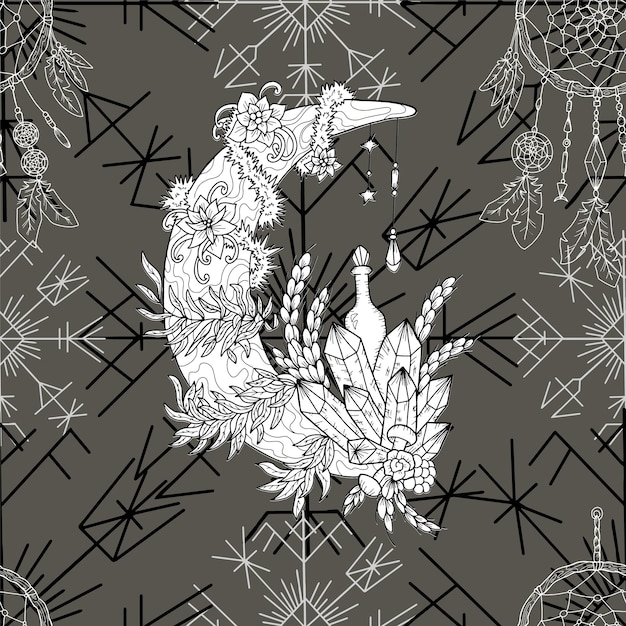
In conclusion, this section sets the stage for exploring the vast visual universe of The Witcher games, showcasing the meticulous planning and creative execution that went into every aspect of the game’s design.
Exploring Character Design
One of the most compelling aspects of The Witcher Art Book: Behind-the-Scenes Look at Game Development is its deep dive into character design. The book provides a rare glimpse into the creative decisions behind iconic characters like Geralt, Yennefer, and Ciri.
Through sketches, illustrations, and commentary, readers can trace the evolution of these characters, understanding the choices that defined their visual identities. This section is perfect for fans who appreciate the nuances of character development and the artistry involved in bringing them to life.
Geralt of Rivia: An In-Depth Study
The art book dedicates significant attention to main character Geralt of Rivia, showcasing the various iterations of his appearance. From early sketches to final renderings, readers can see the process of creating a character who is both rugged and charismatic.
Detailed costume designs, weapon concepts, and facial expression studies provide a comprehensive look at the effort involved in making Geralt a believable and iconic protagonist. Every scar and detail tells a story, and the art book unveils those hidden narratives.
The Sorceresses: A Visual Transformation
Yennefer and Ciri also receive detailed attention, with the art book exploring their own unique visual styles and transformations. Readers can see how their designs reflect their personalities and their roles within the Witcher universe.
The book highlights the intricate costume designs of Yennefer, emphasizing her elegance and power. For Ciri, the art book showcases her journey from a young girl to a powerful warrior, with each visual change reflecting her character’s growth.
- Early concepts for Yennefer’s signature outfits and accessories.
- Sketches of Ciri’s various hairstyles and combat gear.
- Illustrations comparing the characters’ appearances across different games.
In conclusion, exploring the character designs in The Witcher Art Book provides a deeper connection to the characters we love, revealing the meticulous artistry and thoughtful decision-making that shaped their identities.
The Making of The Witcher’s Monsters
The monster designs in The Witcher games are renowned for their originality and terrifying realism. The Witcher Art Book: Behind-the-Scenes Look at Game Development explores the origins of these creatures, offering fans a glimpse into the imagination and dark artistry that brought them to life.
Readers will discover how folklore, literature, and the artists’ own creative visions combined to create the memorable and horrifying monsters that populate the Witcher universe. This section is an essential read for anyone fascinated by creature design and the macabre elements of the game.
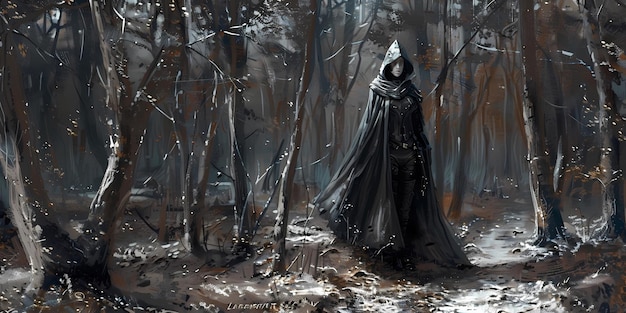
Inspiration and Conceptualization
The art book reveals the various sources of inspiration that guided the artists in their creation of the monsters. From Slavic mythology to classic horror literature, the book explores how these diverse influences were synthesized into unique and terrifying creatures.
Sketches and early concept art provide a fascinating look at the initial designs, showcasing how the monsters evolved from rough ideas to fully realized characters. The commentary from the artists adds depth, explaining their choices and the challenges they faced in bringing these creatures to life.
- Analysis of the mythological origins of creatures like the Leshen and the Striga.
- Sketches illustrating the physical characteristics and behaviors of different monsters.
- Discussions on the artistic challenges of making monsters both terrifying and believable.
In conclusion, this exploration of the monster designs in The Witcher Art Book showcases the depth of creativity and artistic skill that defines the game’s unique and terrifying bestiary.
Environmental Design and World-Building
The rich and immersive environments of The Witcher games are brought to life through intricate environmental design and meticulous world-building. The Witcher Art Book: Behind-the-Scenes Look at Game Development offers an in-depth look at the artistry and effort that went into creating these breathtaking landscapes.
From the bustling streets of Novigrad to the serene forests of Skellige, the art book explores the visual elements that make each location unique and memorable. Readers will gain a deeper appreciation for the level of detail and thoughtful design that define the world of The Witcher.
The Cities and Settlements of the Continent
The art book showcases the architectural designs and visual elements that define the cities and settlements of the Continent. Readers can explore the urban landscapes of Novigrad, Oxenfurt, and Vizima, each with its own distinct character and atmosphere.
Sketches, paintings, and 3D models reveal the thought process behind the creation of these locations. The commentary from the artists explains their choices and the historical and cultural influences that shaped the designs.
The Wilderness and Natural Landscapes
Beyond the cities, the art book also explores the diverse natural landscapes of The Witcher universe. From the misty swamps of Velen to the snow-covered peaks of Skellige, the book showcases the beauty and danger of the game’s wilderness.
Landscape paintings, environmental concepts, and topographical maps reveal the intricate planning and artistic vision that went into creating these breathtaking environments. Readers will gain a new appreciation for the details that make the world of The Witcher so immersive and believable.
- Detailed maps illustrating the different regions of the Continent.
- Architectural sketches of key buildings and landmarks.
- Environmental concepts showcasing the atmosphere and mood of various locations.
- Descriptions of the cultural and historical influences that shaped the designs.
In conclusion, the exploration of environmental design and world-building in The Witcher Art Book underscores the meticulous artistry and thoughtful planning that brought the game’s environments to life.
UI and Graphic Design Elements
While often overlooked, the user interface (UI) and graphic design elements play a critical role in the overall experience of The Witcher games. The Witcher Art Book: Behind-the-Scenes Look at Game Development dedicates a section to these important aspects, offering fans a glimpse into the visual language of the game.
From the design of the menus and inventory screens to the creation of icons and symbols, the art book explores the visual elements that enhance the player’s immersion and understanding of the game world. This section is perfect for those interested in the technical and artistic challenges of UI design.
Designing the Interface
The art book showcases the evolution of the game’s user interface, from early prototypes to final designs. Readers can see how the artists worked to create an interface that is both functional and aesthetically pleasing, enhancing the player’s experience without being intrusive.
Sketches, wireframes, and mockups reveal the thought process behind the various UI elements. The commentary from the designers explains their choices and the technical constraints they faced in creating an intuitive and visually appealing interface.
- Early prototypes of the game’s menus and inventory screens.
- Sketches illustrating the design process for key UI elements.
- Discussions on the challenges of creating an interface that is both functional and aesthetically pleasing.
Crafting the Visual Language
The art book also explores the visual language of the game, including the design of icons, symbols, and other graphic elements. Readers can see how these elements were created to communicate information and enhance the player’s understanding of the Witcher universe.
Concept art, illustrations, and digital models reveal the artistic vision behind these visual elements. The commentary from the artists explains their choices and the cultural and symbolic meanings they were trying to convey and the visual language used.
In conclusion, by exploring the UI and graphic design elements, The Witcher Art Book reveals critical aspects of game development.
The Music and Sound Design Connection
Music and sound design are integral to the immersive experience of The Witcher games. The Witcher Art Book: Behind-the-Scenes Look at Game Development recognizes this connection, offering insights into how visual and auditory elements worked together to create a cohesive and compelling world.
Readers will discover how the visual themes and artistic designs inspired the game’s music and soundscape, and how these auditory elements, in turn, enhanced the impact of the visuals. This section is perfect for fans who appreciate the synergy between art and sound in video games.
Visual Themes and Musical Inspiration
The art book explores how the game’s visual themes influenced the composition of the music. Readers can see how the landscapes, characters, and story elements inspired the game’s composers to create a score that perfectly complements the visuals.
Concept art, illustrations, and musical scores reveal the connections between the visual and auditory elements which shaped the soundscapes. The commentary from the artists and composers provides insight into their collaborative process.
Sound Design and Environmental Immersion
The art book also examines how sound design contributed to the environmental immersion of the game. Readers can see how the sound effects, ambient noises, and character voices were carefully crafted to create a believable and engaging world.
- Interviews with the game’s composers discussing their creative process and musical inspirations.
- Behind-the-scenes footage of recording sessions with musicians and voice actors.
- Discussions on the artistic challenges of creating an immersive and dynamic soundscape.
In conclusion, by exploring the music and sound design connection, The Witcher Art Book offers a deeper appreciation for the holistic artistry that defines the Witcher series and the efforts behind game development.
| Key Point | Brief Description |
|---|---|
| 🎨 Concept Art | Exploration of initial visual designs for characters, creatures, and environments. |
| 🧙 Character Design | Insights into the creation of iconic characters like Geralt, Yennefer, and Ciri. |
| 👾 Monster Creation | Origins and design of terrifying creatures from The Witcher universe. |
| 🌍 Environmental Design | Intricate details of world-building and landscape creation. |
FAQ
▼
The Witcher Art Book is a collection of artwork and commentary that showcases the creative process behind the development of The Witcher video games, featuring concept art, character designs, and environmental landscapes.
▼
The target audience includes fans of The Witcher video games, art enthusiasts, game developers, and anyone interested in the behind-the-scenes process of creating a successful game franchise.
▼
The book includes concept art, character designs, monster designs, environmental art, UI designs, and graphic design elements that contributed to the Witcher games’ visual style.
▼
Yes, the book offers insights into the creative decisions, artistic challenges, and design processes that shaped the visual elements of The Witcher games, providing a unique perspective on game development.
▼
The Witcher Art Book is available for purchase online through major retailers like Amazon, Barnes & Noble, and other specialized book outlets, as well as at select physical bookstores such as large chain retailers and smaller independent bookstores.
Conclusion
The Witcher Art Book: Behind-the-Scenes Look at Game Development is more than just a collection of pretty pictures; it’s a window into the creative minds and artistic processes that brought the world of The Witcher to life. For fans of the games, art enthusiasts, and aspiring developers, this book offers a wealth of inspiration and insight, celebrating the artistry and dedication that define one of the most beloved video game series of all time.
